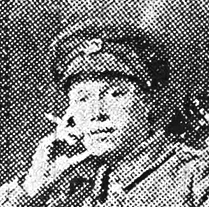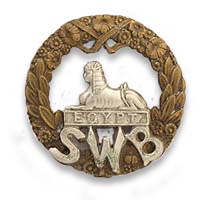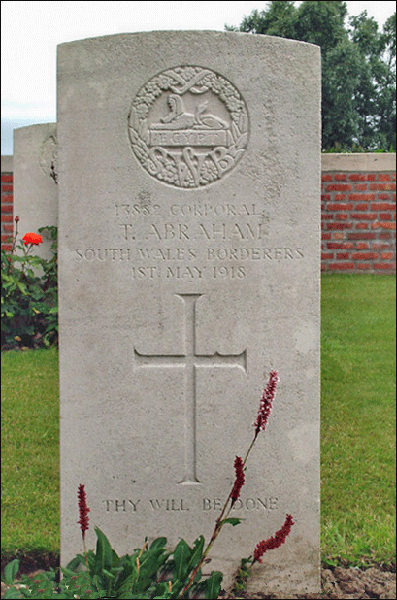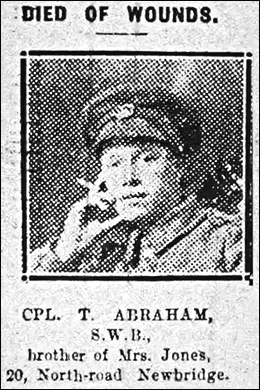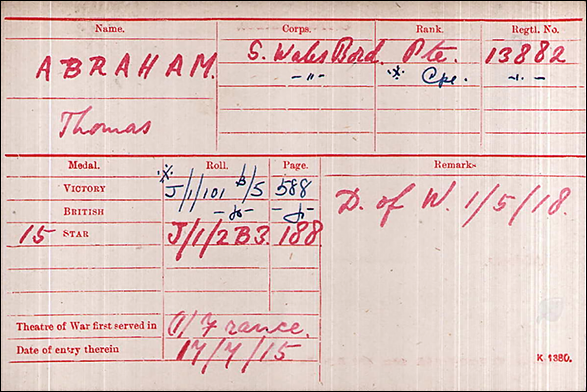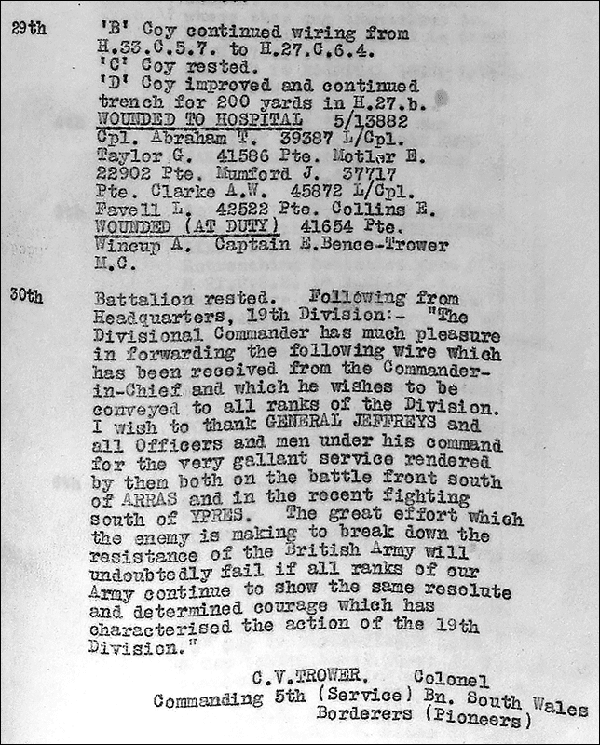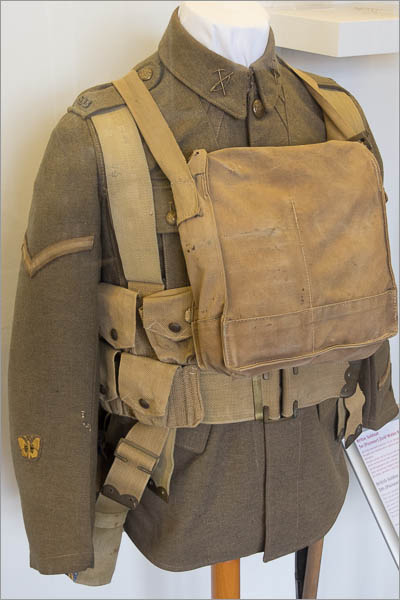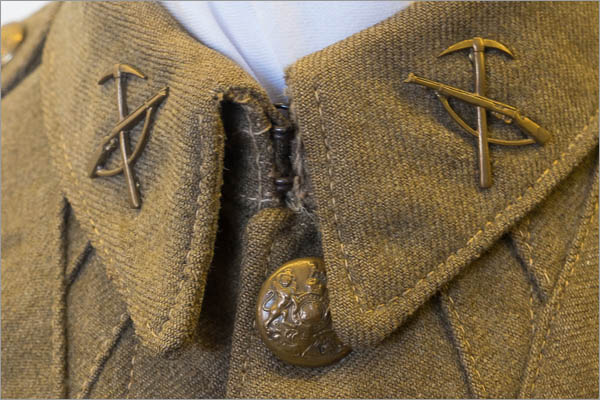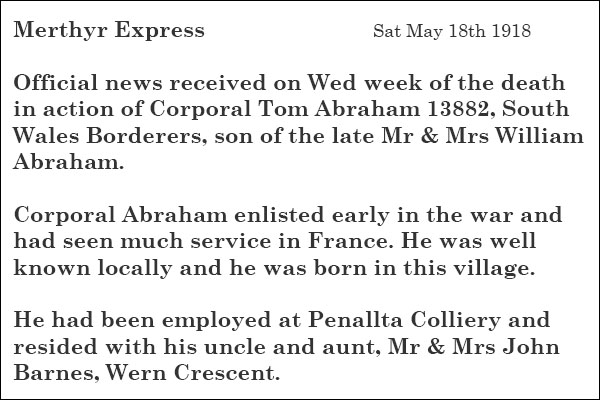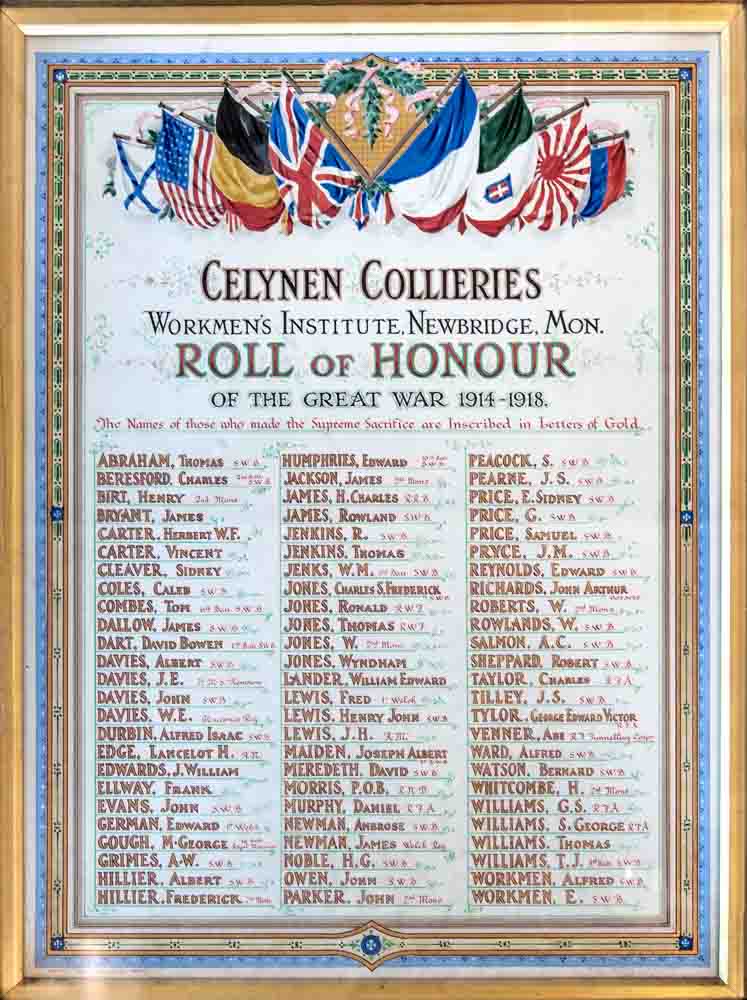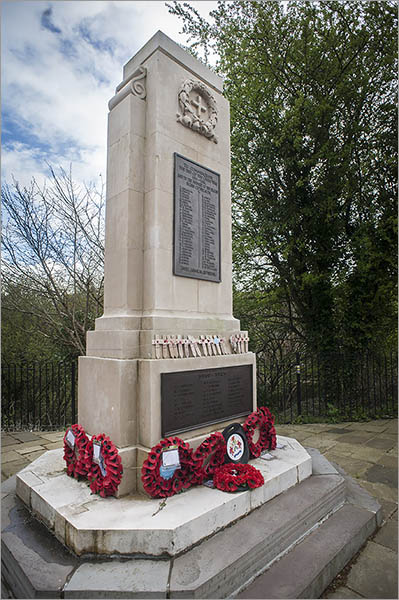| Unit/Regiment | South Wales Borderers |
| Battalion | 5th (Service) |
| Rank | Corporal |
| Service Number | 13882 |
Theatre of War first served in | (1) France |
| Date of entry therein | 17/07/1915 |
| Age at Death | 24 |
| Date of Death | 01/05/1918 |
| Burial/Memorial Reference | Arneke British Cemetery Plot II Row B Grave 1 |
| CWGC Family Details | Son of William Abraham. |
| SDGW – Where Born | Nelson, Glam |
| Enlisted | Newport, Mon |
| Resided | Newbridge, Mon |
| How Died | Died of wounds |
| Theatre of War | Western European Theatre |
| Medal Entitlement | 1914-15 Star
British War Medal
Victory Medal |
| Notes | Commemorated on the Nelson War Memorial
Commemorated on the Celynen Collieries Roll of Honour |
Family
Thomas Abraham was born in Nelson, Glamorgan in 1896 to William and Alice Abraham. In 1901 the family was living at
20 Shingrig Road in Nelson, Thomas had two older sisters, Emily and Winifred and two younger sisters, Clarice and Lilian.
William Abraham was a coal miner (hewer) who was bi-lingual (English/Welsh) as were all of the children,
William’s wife Alice was the only one not to speak Welsh.
William Abraham died in 1901 and by the time of the 1911 Census Alice was married to George Hughes who was 10 years her junior.
Together with George, Alice had three further children – Theresa Ethel, Frederick George and Florence Nelly.
In 1911 the family was living at 18 Torlais Street Newbridge, Mon. and the fifteen year old Thomas was working as a Collier Boy.
Military
Thomas enlisted in the army and served as a Private (13882) with the 5th (Service) Bn. South Wales Borderers. It is very likely that he
joined up on the same day as
Alfred William Grimes (13882), both left for France aboard the SS Empress Queen on the same day and tragically both were killed within a few days
of eachother in April 1918.
After training, the Battalion arrived at Le Havre in France on 17/07/1915 as part of the 38th Brigade of the 19th Division. It soon became the
Divisional Pioneer Battalion, and as such combined the duties of trench digging and mining with bombing and fighting.
The 5th Bn. fought at Loos in September 1915 and spent the winter repairing roads, constructing tramways, improving trenches,
and in mining in close proximity to the enemy.
In 1916 the battalion saw numerous actions on the Somme, losing 220 men in the last ten days of July.
March 1917 saw the 5th Bn. moved up to Ypres to prepare for the attack on the Messines Ridge, their duties were to consolidate
any captured positions and assist in preparing passage for the guns following the infantry, both of which resulted in the battalion
engaging in fierce fighting. For their part in the successful Battle of Messines Ridge the battalion gained two MCs, two DCMs and
two MM which shows the value of their work as both Pioneers and Infantrymen.
The battalion was heavily employed in the summer and autumn of 1917 during the third Battle of Ypres and at Passchendael.
In the great German attack of March 1918 the battalion fought a memorable action inflicting heavy losses on the enemy by determined
counter-attacks and withdrawing steadily to positions which it had dug on previous days but at the cost of 150 casualties.
Thomas was fatally wounded on 29th April, his evacuation to hospital was recorded in the Battalion War Diary which also revealed
that he had been promoted to Corporal. Two days later, on 1st May 1918, Cpl. Thomas Abraham died as a result of his wounds aged 24.
He is buried in the Arneke British Cemetery approximately 50 Km south-east of Calais and about 8 Km north-west of the town of Cassel.
The cemetery was begun by the 13th Casualty Clearing Station which moved to Arneke from the Proven area in October 1917. It was joined by the 10th and 44th Clearing
Stations in April 1918. The cemetery was used by these hospitals until the end of May 1918.
